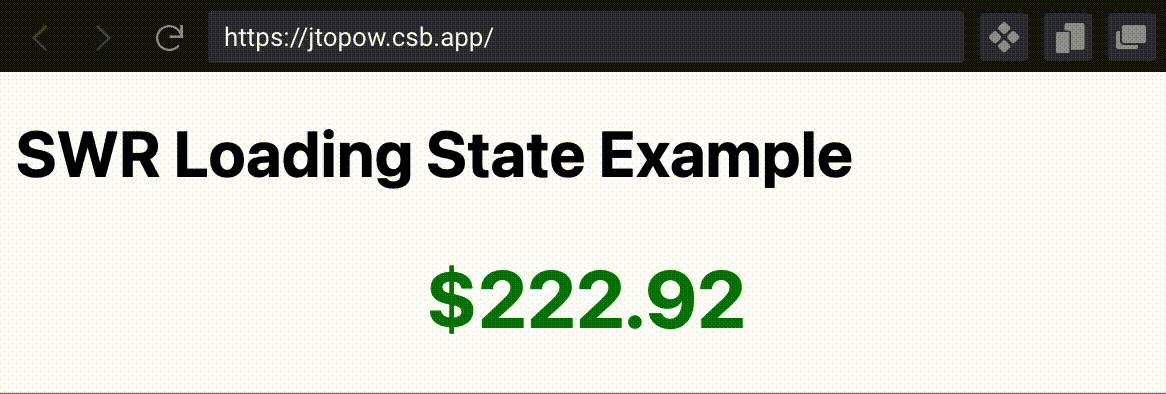Understanding SWR
State Machine
useSWR returns data, error, isLoading, and isValidating depending on the state of the fetcher function. This diagrams describe how SWR returns values in some scenarios.
Fetch and Revalidate
This pattern is to fetch data and revalidate it later.
Key Change
This pattern is to fetch data and change the key and revalidate it later.
Key Change + Previous Data
This pattern is to fetch data and change the key and revalidate it later with the keepPreviousData option.
Fallback
This pattern is to fetch data and revalidate it later with fallback data.
Key Change + Fallback
This pattern is to fetch data and change the key and revalidate it later with fallback data.
Key Change + Previous Data + Fallback
This pattern is to fetch data and change the key and revalidate it later with the keepPreviousData option and fallback data.
Combining with isLoading and isValidating for better UX
Comparing to the existing isValidating value, isLoading is a new property that can help you for the more general loading cases for UX.
isValidatingbecomestruewhenever there is an ongoing request whether the data is loaded or notisLoadingbecomestruewhen there is an ongoing request and data is not loaded yet.
Simply saying you can use isValidating for indicating everytime there is an ongoing revalidation, and isLoading for indicating that SWR is revalidating but there is no data yet to display.
Fallback data and previous data are not considered "loaded data," so when you use fallback data or enable the keepPreviousData option, you might have data to display.
function Stock() {
const { data, isLoading, isValidating } = useSWR(STOCK_API, fetcher, {
refreshInterval: 3000
});
// If it's still loading the initial data, there is nothing to display.
// We return a skeleton here.
if (isLoading) return <div className="skeleton" />;
// Otherwise, display the data and a spinner that indicates a background
// revalidation.
return (
<>
<div>${data}</div>
{isValidating ? <div className="spinner" /> : null}
</>
);
}
You can find the code example here (opens in a new tab)
Return previous data for better UX
When doing data fetching based on continuous user actions, e.g. real-time search when typing, keeping the previous fetched data can improve the UX a lot. keepPreviousData is an option to enable that behavior. Here's a simple search UI:
function Search() {
const [search, setSearch] = React.useState('');
const { data, isLoading } = useSWR(`/search?q=${search}`, fetcher, {
keepPreviousData: true
});
return (
<div>
<input
type="text"
value={search}
onChange={(e) => setSearch(e.target.value)}
placeholder="Search..."
/>
<div className={isLoading ? "loading" : ""}>
{data?.products.map(item => <Product key={item.id} name={item.name} />)
</div>
</div>
);
}With keepPreviousData enabled, you will still get the previous data even if you change the SWR key and the data for the new key starts loading again.
You can find the full code for this example here: https://codesandbox.io/s/swr-keeppreviousdata-fsjz3m (opens in a new tab).
Dependency Collection for performance
SWR only triggers re-rendering when the states used in the component have been updated. If you only use data in the component, SWR ignores the updates of other properties like isValidating, and isLoading. This reduces rendering counts a lot. More information can be found here.





